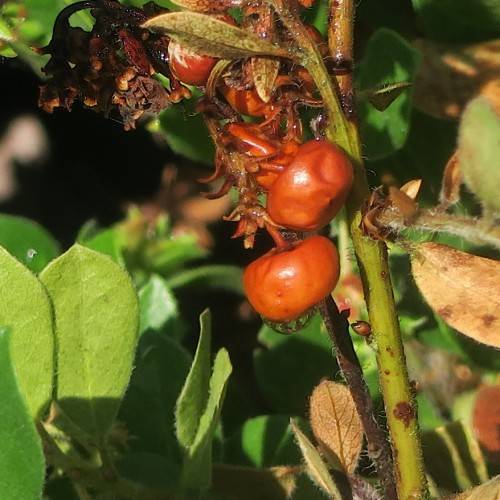
Hairy Manzanita
Arctostaphylos columbiana
Also Known As - Bristly ManzanitaWatering:
Minimal
Hardiness Zone:
Sun:
full sun,part shade
Leaf:
Yes
Growth Rate:
Low
Drought Tolerant:
Yes
Salt Tolerant:
Yes
Invasive:
Yes
Care Level:
Medium
watering
Burdock should be watered regularly but moderately, typically once per week. Water deeply enough to moisten the entire root zone of the plant, which is typically 6-8 inches deep. During warmer months, depending on soil type (sandy or clay) and ambient temperature, the soil may dry more quickly—give an extra deep watering if the soil feels dry. Be careful not to over-water, as this can lead to rotting roots. Burdock plants do best with regular application of water throughout the growing season.
sunlight
Burdock (Arctium x nothum) is a hardy and adaptable plant species that thrives in full sunlight. It prefers a location in full sun, meaning an area that receives at least 6 to 8 hours of direct sunlight per day. Burdock is a perennial plant in temperate climates, so it remains in the same spot throughout the year. In order to truly thrive in full sunlight, it is important to site Burdock in a spot that is free from shade from trees or buildings throughout the day. It is best to plant it in early spring after the last frost has passed. During summer, full sun is essential for the plant’s full growth and production of best buds for harvesting. During autumn as the weather cools, the amount of sunlight Burdock will need will decrease slightly, but it still needs some sun to survive the winter and be ready to begin growing again in early spring.
pruning
Pruning for a Burdock (Arctium X Nothum) plant should be done during the early spring season, before any new growth has taken place. It is best to prune the plant to about 6-8 inches tall, ensuring that only healthy stems are cut away. Pruning will help to ensure the health of the plant, removing dead or dying branches and allowing the plant to focus its energy on new growth. Light pruning can be done throughout the growing season to encourage bushier growth and maintain a desired size and shape. Annual pruning is also recommended to help keep the Burdock healthy and produce ample foliage and flowers.
